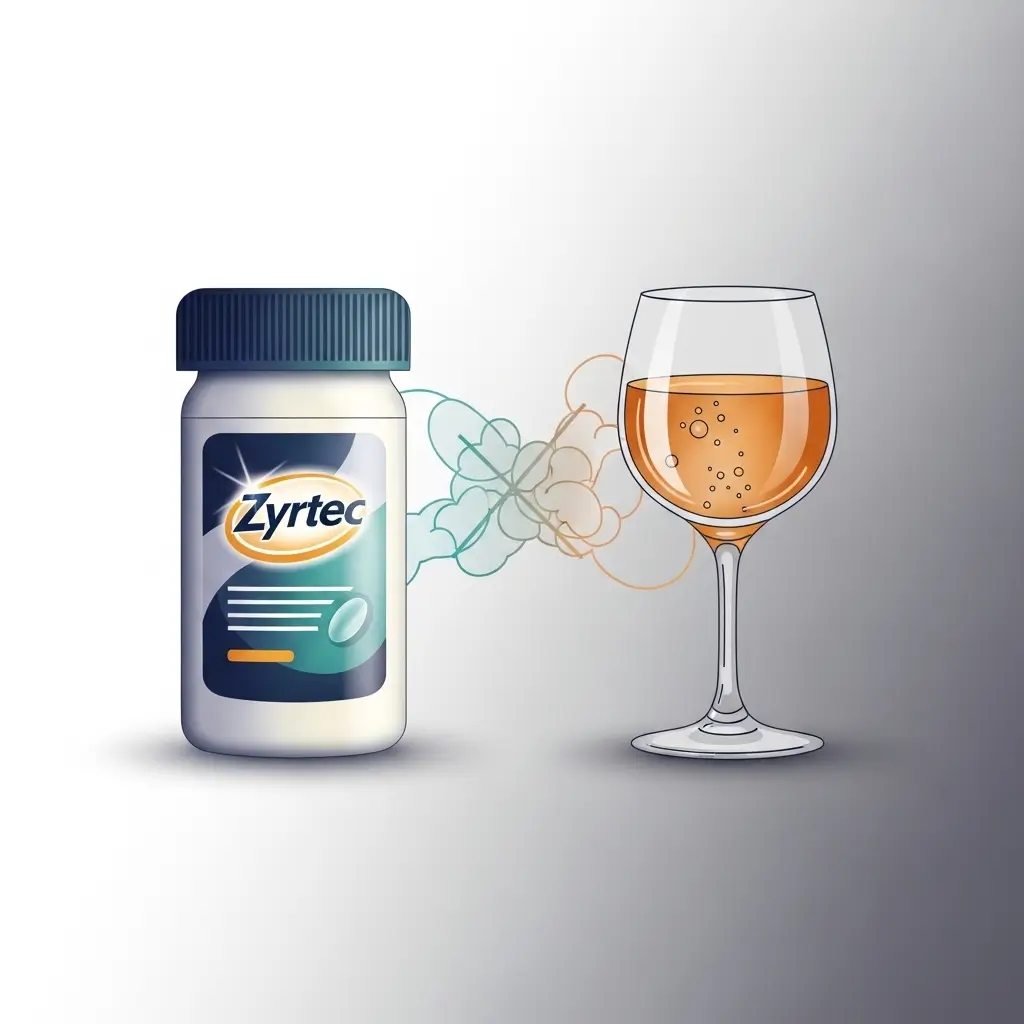Understanding Meloxicam Abuse
Meloxicam, a nonsteroidal anti-inflammatory drug (NSAID), is primarily used to alleviate pain, tenderness, swelling, and stiffness associated with conditions such as osteoarthritis, rheumatoid arthritis, and juvenile rheumatoid arthritis in children aged 2 years and older. However, despite not being considered an addictive drug, meloxicam can still be subject to abuse.

Meloxicam: An Overview
Meloxicam belongs to the class of NSAIDs, which work by reducing inflammation and pain in the body. It is available in oral tablet and liquid formulations and is typically prescribed by healthcare professionals to manage various forms of arthritis. As with any medication, it is essential to use meloxicam as directed by a healthcare provider and follow the prescribed dosage to ensure its safe and effective use.
Risks of Meloxicam Abuse
While meloxicam itself does not possess addictive properties, it can still be misused or abused. This can occur when individuals continue taking the drug without a therapeutic need or become psychologically dependent on the pain relief it provides. It's important to note that abusing meloxicam can have serious consequences and should be avoided.
Some individuals may mistakenly assume that meloxicam contains opioids, leading to the misuse of the drug and contributing to a small black market for meloxicam. Signs of meloxicam abuse may include taking the drug more frequently than prescribed, combining it with alcohol or other prescription drugs, or using additional NSAIDs.
To ensure the safe use of meloxicam, it is crucial to adhere to the prescribed dosage and frequency, as exceeding the recommended limits can lead to potential health risks. Misuse and abuse of meloxicam can occur when it is not taken as prescribed, and it is important to be aware of the potential risks associated with such behavior.
If you or someone you know is struggling with meloxicam abuse, seeking professional help and guidance is strongly recommended. Healthcare professionals can provide appropriate treatment options and support individuals in overcoming meloxicam abuse. Remember, it is always essential to use medications as directed and to consult with a healthcare provider for any concerns or questions about medication usage.
In the next sections, we will explore the factors contributing to meloxicam abuse, the effects of meloxicam abuse, how to recognize signs of abuse, and available treatment options to address meloxicam abuse.
Factors Contributing to Meloxicam Abuse
Meloxicam abuse can occur due to various factors, including misconceptions and misperceptions about the drug, as well as certain risk factors that increase the likelihood of abuse.
Misconceptions and Misperceptions
One factor contributing to meloxicam abuse is the existence of misconceptions and misperceptions surrounding the medication. Some patients may mistakenly assume that meloxicam contains opioids, leading to a small black market for the drug. This misperception can stem from the belief that prescription painkillers like meloxicam can be abused recreationally, similar to opioids.
It's important to note that meloxicam is not capable of causing euphoria or a high that leads to addiction. However, it may be abused in patterns of polydrug abuse. For example, individuals experiencing hangovers from binge drinking alcohol might take large doses of meloxicam to quickly alleviate hangover symptoms, enabling them to continue binge drinking with fewer immediate consequences. Combining alcohol and non-steroidal anti-inflammatory drugs (NSAIDs) like meloxicam can be extremely dangerous, potentially resulting in ulcers or bleeding in the stomach or intestines.
Risk Factors for Abuse
Certain risk factors can increase the likelihood of meloxicam abuse. Patients with heart and gastrointestinal conditions are at higher risk for negative reactions when taking meloxicam or other NSAIDs. Additionally, individuals with asthma may be more susceptible to adverse effects, such as shortness of breath, when using meloxicam.
While meloxicam itself is not considered an addictive drug, there is still a risk of abuse by continuing to take the medication when there is no therapeutic need or by becoming psychologically dependent on the pain relief it provides. It's essential to note that meloxicam does not alter the brain's reward pathways like opioids. However, taking high doses of meloxicam can lead to overdose and internal damage.
Understanding the factors that contribute to meloxicam abuse is crucial in addressing and preventing misuse. By dispelling misconceptions, raising awareness, and identifying individuals at higher risk, we can work towards reducing the incidence of meloxicam abuse and promoting safe and responsible medication usage.
Effects of Meloxicam Abuse
Abusing meloxicam, a nonsteroidal anti-inflammatory drug (NSAID), can lead to various short-term and long-term effects. It is essential to understand the potential risks and consequences associated with meloxicam abuse.
Short-term Effects
Short-term effects of meloxicam abuse may include:
- Anemia
- Abdominal pain
- Edema
- Insomnia
- Abnormal dreams
- Nervousness
- Anxiety
- Changes in vision
- Tinnitus
These symptoms can have a significant impact on a person's well-being and daily functioning. It's important to note that these effects may vary in severity and duration depending on the individual and the extent of meloxicam abuse. Recognizing these signs is crucial in identifying meloxicam abuse and seeking appropriate help.
Long-term Consequences
Long-term meloxicam abuse can result in chronic health issues and complications. Some potential long-term consequences of meloxicam abuse include:
- Chronic anemia
- Gastrointestinal problems
- Kidney damage
- Liver disease
- Cardiovascular issues
- Cognitive impairments
These complications can significantly impact an individual's overall health and quality of life. It is vital to address meloxicam abuse promptly and seek appropriate treatment to mitigate the long-term consequences.
If someone is suspected of abusing meloxicam or experiencing an overdose, immediate medical attention should be sought. Overdosing on meloxicam can lead to serious health complications. Common symptoms of meloxicam overdose include nausea, vomiting, stomach pain, drowsiness, black or bloody stools, coughing up blood, shallow breathing, fainting, or coma [3]. If you or someone you know is experiencing these symptoms, it is crucial to seek medical assistance immediately.
Understanding the short-term effects and long-term consequences of meloxicam abuse highlights the importance of avoiding misuse and following prescribed guidelines. Proper education, awareness, and responsible medication usage are key in preventing meloxicam abuse and mitigating its potential harm. For more information on proper medication usage and other addiction recovery topics, explore our article on Addiction Recovery.
Recognizing Meloxicam Abuse
When it comes to recognizing meloxicam abuse, understanding the signs and symptoms is crucial. Meloxicam is a nonsteroidal anti-inflammatory drug (NSAID) commonly prescribed for pain relief and inflammation reduction. However, misuse and abuse of meloxicam can occur when it is not taken as prescribed. While meloxicam itself is not habit-forming, it is crucial to use the medication as directed and not exceed the prescribed dosage. Misuse of meloxicam can lead to severe side effects and potentially deadly consequences, especially when older adults exceed the recommended dose.
Signs and Symptoms
Signs of meloxicam abuse may include taking the drug more frequently than prescribed or combining it with alcohol, other prescription drugs, or additional NSAIDs. It's important to be aware of the following signs and symptoms that may indicate meloxicam abuse:
- Stomach bleeding
- Ringing in the ears (tinnitus)
- Chest pain
- Nausea and vomiting
- Abdominal pain
- Edema (swelling)
- Insomnia
- Abnormal dreams
- Nervousness and anxiety
- Changes in vision
These signs can help identify potential issues and prompt the need for intervention to avoid serious reactions, including overdose. If someone is suspected of abusing meloxicam or experiencing an overdose, it is crucial to seek immediate medical attention. Overdosing on meloxicam can lead to serious health complications such as shallow breathing, fainting, or even coma.
Importance of Early Detection
Early detection of meloxicam abuse is essential for preventing further harm to individuals struggling with substance abuse. Recognizing the signs and symptoms allows for timely intervention and support. Substance addiction, if present, can be treated with psychological therapies and peer support. Seeking professional help and providing a supportive environment can make a significant difference in the recovery journey of individuals struggling with meloxicam abuse. If you suspect someone may be abusing meloxicam or experiencing related issues, encourage them to seek assistance from healthcare professionals and addiction recovery specialists.
By being aware of the signs of meloxicam abuse and the importance of early detection, we can play a role in helping individuals receive the necessary support and treatment they need to overcome substance abuse challenges.
Treatment for Meloxicam Abuse
When dealing with meloxicam abuse, it is crucial to seek appropriate treatment to address the underlying issues and promote recovery. The treatment for meloxicam abuse typically involves seeking medical assistance and engaging in psychological therapies.
Seeking Medical Assistance
If someone is suspected of abusing meloxicam or experiencing an overdose, immediate medical attention should be sought. Overdosing on meloxicam can lead to serious health complications. Common symptoms of meloxicam overdose include nausea, vomiting, stomach pain, drowsiness, black or bloody stools, coughing up blood, shallow breathing, fainting, or coma [3]. It is essential to reach out to healthcare professionals who can provide the necessary medical intervention and support.
Medical assistance for meloxicam abuse may involve:
- Stabilization: In cases of overdose or severe symptoms, the individual may require immediate medical stabilization. This may include procedures to address the overdose and monitoring of vital signs.
- Detoxification: For individuals who have developed a physical dependence on meloxicam, a supervised detoxification process may be necessary. This allows the body to safely eliminate the drug while managing withdrawal symptoms.
- Medical evaluation: Healthcare professionals will assess the individual's overall health and any potential complications related to meloxicam abuse. This evaluation helps in developing an appropriate treatment plan tailored to the individual's specific needs.
Psychological Therapies
Psychological therapies play a crucial role in the treatment of meloxicam abuse. These therapies aim to address the underlying factors contributing to the abuse and help individuals develop healthier coping mechanisms. Some common psychological therapies used in the treatment of substance abuse include:
- Cognitive-behavioral therapy (CBT): CBT focuses on identifying and modifying negative thought patterns and behaviors associated with substance abuse. It helps individuals develop strategies to manage cravings, cope with stress, and prevent relapse.
- Motivational interviewing: This approach encourages individuals to explore their motivations for change and strengthen their commitment to recovery. It helps individuals resolve any ambivalence they may have about quitting meloxicam abuse and fosters a sense of self-efficacy.
- Support groups: Participating in support groups, such as Narcotics Anonymous (NA), can provide individuals with a supportive community of people who have experienced similar struggles. Sharing experiences, learning from others, and receiving encouragement can be instrumental in the recovery process.
It is essential to tailor the treatment approach to meet the individual's specific needs. The duration and intensity of treatment may vary depending on the severity of the meloxicam abuse and individual circumstances. Seeking professional help and guidance is crucial to ensure the most effective treatment outcomes.
While meloxicam itself may not be addictive, its abuse can lead to dangerous patterns of polydrug abuse, as individuals may use it to alleviate hangover symptoms and continue binge drinking [4]. It is important to address all aspects of substance abuse and develop a comprehensive treatment plan that addresses the individual's physical and psychological well-being.
Prevention and education efforts also play a vital role in combating meloxicam abuse. Proper medication usage, increased awareness about the risks associated with meloxicam abuse, and the dangers of combining it with other substances are all essential components of preventing meloxicam abuse from occurring in the first place.
Preventing Meloxicam Abuse
Preventing meloxicam abuse is crucial to ensure the safety and well-being of individuals using this medication. By following proper medication usage guidelines and promoting education and awareness, we can take steps to minimize the risk of misuse and potential harm.
Proper Medication Usage
To prevent meloxicam abuse, it is essential to use the medication as prescribed by a healthcare professional. Meloxicam should be taken exactly as directed, with the lowest effective dose for the specific condition being treated [1]. It is important to follow these guidelines:
- Dosage: Take meloxicam according to the prescribed dosage for your specific condition, such as osteoarthritis, rheumatoid arthritis, pain, or juvenile rheumatoid arthritis. Dosages may vary, so it is crucial to follow the instructions provided by your healthcare provider.
- Duration: Use meloxicam for the recommended duration specified by your healthcare professional. Do not continue taking meloxicam beyond the prescribed period without consulting your doctor.
- Age and Pregnancy Restrictions: Meloxicam is not recommended for individuals younger than 2 years old. Pregnant individuals should avoid taking meloxicam during the last 20 weeks of pregnancy, as it can cause serious heart or kidney problems in the unborn baby and complications with the pregnancy [1].
By adhering to these guidelines, individuals can ensure the safe and appropriate use of meloxicam.
Education and Awareness
Promoting education and raising awareness about the potential risks and consequences of meloxicam abuse is essential in preventing misuse. The following strategies can help in this regard:
- Healthcare Provider Communication: Engage in open and honest discussions with healthcare providers about the risks associated with meloxicam use. Seek clarification on proper usage, potential side effects, and any concerns you may have.
- Patient Education: Healthcare providers can play a crucial role in educating patients about the safe use of meloxicam. This includes providing information on the appropriate dosage, potential side effects, and the importance of sticking to the prescribed regimen.
- Community Awareness Programs: Conduct community awareness programs to educate the public about the risks and consequences of meloxicam abuse. These programs can include information about the proper use of the medication and the potential dangers of misuse.
By increasing education and awareness, individuals can make informed decisions about their medication use and better understand the importance of following prescribed guidelines.
Preventing meloxicam abuse requires a collective effort from healthcare professionals, individuals using the medication, and the broader community. By promoting proper medication usage and fostering education and awareness, we can work together to minimize the risk of meloxicam misuse and promote the safe and effective use of this medication.













